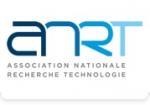Multi-objective inverse design framework for nonlinear photonic processes in silicon photonics: from modelling to optical bench experiments // Multi-objective inverse design framework for nonlinear photonic processes in silicon photonics: from modelling t
|
ABG-134101
ADUM-67925 |
Sujet de Thèse | |
| 30/10/2025 |
Université Paris-Saclay GS Sciences de l'ingénierie et des systèmes
Palaiseau - Ile-de-France - France
Multi-objective inverse design framework for nonlinear photonic processes in silicon photonics: from modelling to optical bench experiments // Multi-objective inverse design framework for nonlinear photonic processes in silicon photonics: from modelling t
- Electronique
Silicon photonics, Nonlinear optics, Numerical modelling and AI assisted design, Optical experiments, Clean room fabrication techniques
Silicon photonics, Nonlinear optics, Numerical modelling and AI assisted design, Optical experiments, Clean room fabrication techniques
Silicon photonics, Nonlinear optics, Numerical modelling and AI assisted design, Optical experiments, Clean room fabrication techniques
Description du sujet
The proposed PhD thesis lies in the field of integrated silicon photonics [1]. The integration of diverse materials and advanced miniaturization in photonic platforms enables the realization of numerous optical functions within mm²-scale footprints, comprising hundreds of components and complex light-manipulating circuits. This field bridges fundamental physics and technological applications, from waveguide-level studies to large-scale photonic systems.
Nonlinear optical effects have long been central to scientific advances, from the first ruby laser (1960) to modern attosecond laser sources used to probe ultrafast electronic and spin dynamics. Nonlinear optics underpins a vast range of applications, including optical signal processing, material surface analysis, high-resolution imaging, and medical treatments. Historically, these developments occurred in free-space and fibre optics, but integrated nonlinear photonics—merging both worlds—has recently emerged as a powerful research frontier [2].
Planar photonic platforms based on Si, SiN, or AlGaAs offer tight mode confinement and long interaction lengths, ideal for exploiting χ² and χ³ nonlinearities. These effects enable key functionalities such as frequency comb generation, supercontinuum extension, wavelength conversion (FWM, SHG, DFG), all-optical signal processing, and quantum photon-pair generation. Yet, achieving efficient on-chip nonlinear processes remains challenging. Device performance depends on numerous coupled parameters—geometry, material composition, dispersion, coupling, and losses—making analytical design often insufficient [3]. The optimization of such systems requires accounting for phase matching, group-velocity dispersion (GVD), confinement factors, and fabrication tolerances.
Given the complex cascade of nonlinear effects in realistic structures, AI-driven inverse design offers a promising approach to uncover unconventional geometries (e.g., multi-section tapers, asymmetric waveguides, coupled resonators) that may elude human intuition [4]. However, data scarcity poses a major limitation: generating high-fidelity nonlinear simulation data is computationally costly, and existing datasets are too narrow for robust large-scale training. Addressing this requires strategies such as dimensionality reduction of opto-geometric parameters and incorporating physical constraints—symmetries, conservation laws, and modal structures—to reduce the effective search space.
Within this context, the PhD aims to explore the frontiers of integrated nonlinear photonics through a unified modelling framework for complex nonlinear interactions in coupled photonic systems. The overarching goal is to develop a general, flexible theoretical foundation enabling inverse design of advanced nonlinear devices.
Rather than focusing on a single component, the project seeks to capture the interplay of dispersion, nonlinearity, and coupling in integrated resonant structures—such as photonic crystal cavities and hybrid material platforms. Through rigorous modelling, numerical simulations, and experimental validation, it will deliver predictive tools for designing and optimizing nonlinear phenomena.
A central aspect is the integration of emerging nonlinear materials—notably two-dimensional transition metal dichalcogenides (TMDs) and chalcogenide glasses—within silicon photonics. Their large nonlinear coefficients and broad transparency windows make them ideal candidates for validating the framework's predictive and design capabilities.
Ultimately, this research aims to advance the understanding of nonlinear light–matter interactions in integrated systems and enable the development of purpose-designed, scalable, and reconfigurable nonlinear photonic circuits. By uniting modelling, inverse design, and experimental demonstration, it will contribute to the next generation of chip-scale technologies for ultrafast signal processing, low-noise amplification, and quantum light generation.
------------------------------------------------------------------------------------------------------------------------------------------------------------------------
------------------------------------------------------------------------------------------------------------------------------------------------------------------------
The proposed PhD thesis lies in the field of integrated silicon photonics [1]. The integration of diverse materials and advanced miniaturization in photonic platforms enables the realization of numerous optical functions within mm²-scale footprints, comprising hundreds of components and complex light-manipulating circuits. This field bridges fundamental physics and technological applications, from waveguide-level studies to large-scale photonic systems.
Nonlinear optical effects have long been central to scientific advances, from the first ruby laser (1960) to modern attosecond laser sources used to probe ultrafast electronic and spin dynamics. Nonlinear optics underpins a vast range of applications, including optical signal processing, material surface analysis, high-resolution imaging, and medical treatments. Historically, these developments occurred in free-space and fibre optics, but integrated nonlinear photonics—merging both worlds—has recently emerged as a powerful research frontier [2].
Planar photonic platforms based on Si, SiN, or AlGaAs offer tight mode confinement and long interaction lengths, ideal for exploiting χ² and χ³ nonlinearities. These effects enable key functionalities such as frequency comb generation, supercontinuum extension, wavelength conversion (FWM, SHG, DFG), all-optical signal processing, and quantum photon-pair generation. Yet, achieving efficient on-chip nonlinear processes remains challenging. Device performance depends on numerous coupled parameters—geometry, material composition, dispersion, coupling, and losses—making analytical design often insufficient [3]. The optimization of such systems requires accounting for phase matching, group-velocity dispersion (GVD), confinement factors, and fabrication tolerances.
Given the complex cascade of nonlinear effects in realistic structures, AI-driven inverse design offers a promising approach to uncover unconventional geometries (e.g., multi-section tapers, asymmetric waveguides, coupled resonators) that may elude human intuition [4]. However, data scarcity poses a major limitation: generating high-fidelity nonlinear simulation data is computationally costly, and existing datasets are too narrow for robust large-scale training. Addressing this requires strategies such as dimensionality reduction of opto-geometric parameters and incorporating physical constraints—symmetries, conservation laws, and modal structures—to reduce the effective search space.
Within this context, the PhD aims to explore the frontiers of integrated nonlinear photonics through a unified modelling framework for complex nonlinear interactions in coupled photonic systems. The overarching goal is to develop a general, flexible theoretical foundation enabling inverse design of advanced nonlinear devices.
Rather than focusing on a single component, the project seeks to capture the interplay of dispersion, nonlinearity, and coupling in integrated resonant structures—such as photonic crystal cavities and hybrid material platforms. Through rigorous modelling, numerical simulations, and experimental validation, it will deliver predictive tools for designing and optimizing nonlinear phenomena.
A central aspect is the integration of emerging nonlinear materials—notably two-dimensional transition metal dichalcogenides (TMDs) and chalcogenide glasses—within silicon photonics. Their large nonlinear coefficients and broad transparency windows make them ideal candidates for validating the framework's predictive and design capabilities.
Ultimately, this research aims to advance the understanding of nonlinear light–matter interactions in integrated systems and enable the development of purpose-designed, scalable, and reconfigurable nonlinear photonic circuits. By uniting modelling, inverse design, and experimental demonstration, it will contribute to the next generation of chip-scale technologies for ultrafast signal processing, low-noise amplification, and quantum light generation.
------------------------------------------------------------------------------------------------------------------------------------------------------------------------
------------------------------------------------------------------------------------------------------------------------------------------------------------------------
Début de la thèse : 01/10/2026
WEB : https://minaphot.c2n.universite-paris-saclay.fr/en/
Nonlinear optical effects have long been central to scientific advances, from the first ruby laser (1960) to modern attosecond laser sources used to probe ultrafast electronic and spin dynamics. Nonlinear optics underpins a vast range of applications, including optical signal processing, material surface analysis, high-resolution imaging, and medical treatments. Historically, these developments occurred in free-space and fibre optics, but integrated nonlinear photonics—merging both worlds—has recently emerged as a powerful research frontier [2].
Planar photonic platforms based on Si, SiN, or AlGaAs offer tight mode confinement and long interaction lengths, ideal for exploiting χ² and χ³ nonlinearities. These effects enable key functionalities such as frequency comb generation, supercontinuum extension, wavelength conversion (FWM, SHG, DFG), all-optical signal processing, and quantum photon-pair generation. Yet, achieving efficient on-chip nonlinear processes remains challenging. Device performance depends on numerous coupled parameters—geometry, material composition, dispersion, coupling, and losses—making analytical design often insufficient [3]. The optimization of such systems requires accounting for phase matching, group-velocity dispersion (GVD), confinement factors, and fabrication tolerances.
Given the complex cascade of nonlinear effects in realistic structures, AI-driven inverse design offers a promising approach to uncover unconventional geometries (e.g., multi-section tapers, asymmetric waveguides, coupled resonators) that may elude human intuition [4]. However, data scarcity poses a major limitation: generating high-fidelity nonlinear simulation data is computationally costly, and existing datasets are too narrow for robust large-scale training. Addressing this requires strategies such as dimensionality reduction of opto-geometric parameters and incorporating physical constraints—symmetries, conservation laws, and modal structures—to reduce the effective search space.
Within this context, the PhD aims to explore the frontiers of integrated nonlinear photonics through a unified modelling framework for complex nonlinear interactions in coupled photonic systems. The overarching goal is to develop a general, flexible theoretical foundation enabling inverse design of advanced nonlinear devices.
Rather than focusing on a single component, the project seeks to capture the interplay of dispersion, nonlinearity, and coupling in integrated resonant structures—such as photonic crystal cavities and hybrid material platforms. Through rigorous modelling, numerical simulations, and experimental validation, it will deliver predictive tools for designing and optimizing nonlinear phenomena.
A central aspect is the integration of emerging nonlinear materials—notably two-dimensional transition metal dichalcogenides (TMDs) and chalcogenide glasses—within silicon photonics. Their large nonlinear coefficients and broad transparency windows make them ideal candidates for validating the framework's predictive and design capabilities.
Ultimately, this research aims to advance the understanding of nonlinear light–matter interactions in integrated systems and enable the development of purpose-designed, scalable, and reconfigurable nonlinear photonic circuits. By uniting modelling, inverse design, and experimental demonstration, it will contribute to the next generation of chip-scale technologies for ultrafast signal processing, low-noise amplification, and quantum light generation.
------------------------------------------------------------------------------------------------------------------------------------------------------------------------
------------------------------------------------------------------------------------------------------------------------------------------------------------------------
The proposed PhD thesis lies in the field of integrated silicon photonics [1]. The integration of diverse materials and advanced miniaturization in photonic platforms enables the realization of numerous optical functions within mm²-scale footprints, comprising hundreds of components and complex light-manipulating circuits. This field bridges fundamental physics and technological applications, from waveguide-level studies to large-scale photonic systems.
Nonlinear optical effects have long been central to scientific advances, from the first ruby laser (1960) to modern attosecond laser sources used to probe ultrafast electronic and spin dynamics. Nonlinear optics underpins a vast range of applications, including optical signal processing, material surface analysis, high-resolution imaging, and medical treatments. Historically, these developments occurred in free-space and fibre optics, but integrated nonlinear photonics—merging both worlds—has recently emerged as a powerful research frontier [2].
Planar photonic platforms based on Si, SiN, or AlGaAs offer tight mode confinement and long interaction lengths, ideal for exploiting χ² and χ³ nonlinearities. These effects enable key functionalities such as frequency comb generation, supercontinuum extension, wavelength conversion (FWM, SHG, DFG), all-optical signal processing, and quantum photon-pair generation. Yet, achieving efficient on-chip nonlinear processes remains challenging. Device performance depends on numerous coupled parameters—geometry, material composition, dispersion, coupling, and losses—making analytical design often insufficient [3]. The optimization of such systems requires accounting for phase matching, group-velocity dispersion (GVD), confinement factors, and fabrication tolerances.
Given the complex cascade of nonlinear effects in realistic structures, AI-driven inverse design offers a promising approach to uncover unconventional geometries (e.g., multi-section tapers, asymmetric waveguides, coupled resonators) that may elude human intuition [4]. However, data scarcity poses a major limitation: generating high-fidelity nonlinear simulation data is computationally costly, and existing datasets are too narrow for robust large-scale training. Addressing this requires strategies such as dimensionality reduction of opto-geometric parameters and incorporating physical constraints—symmetries, conservation laws, and modal structures—to reduce the effective search space.
Within this context, the PhD aims to explore the frontiers of integrated nonlinear photonics through a unified modelling framework for complex nonlinear interactions in coupled photonic systems. The overarching goal is to develop a general, flexible theoretical foundation enabling inverse design of advanced nonlinear devices.
Rather than focusing on a single component, the project seeks to capture the interplay of dispersion, nonlinearity, and coupling in integrated resonant structures—such as photonic crystal cavities and hybrid material platforms. Through rigorous modelling, numerical simulations, and experimental validation, it will deliver predictive tools for designing and optimizing nonlinear phenomena.
A central aspect is the integration of emerging nonlinear materials—notably two-dimensional transition metal dichalcogenides (TMDs) and chalcogenide glasses—within silicon photonics. Their large nonlinear coefficients and broad transparency windows make them ideal candidates for validating the framework's predictive and design capabilities.
Ultimately, this research aims to advance the understanding of nonlinear light–matter interactions in integrated systems and enable the development of purpose-designed, scalable, and reconfigurable nonlinear photonic circuits. By uniting modelling, inverse design, and experimental demonstration, it will contribute to the next generation of chip-scale technologies for ultrafast signal processing, low-noise amplification, and quantum light generation.
------------------------------------------------------------------------------------------------------------------------------------------------------------------------
------------------------------------------------------------------------------------------------------------------------------------------------------------------------
Début de la thèse : 01/10/2026
WEB : https://minaphot.c2n.universite-paris-saclay.fr/en/
Nature du financement
Précisions sur le financement
Contrats ED : Programme blanc GS-SIS*Programme pour normalien ENS Paris-Saclay
Présentation établissement et labo d'accueil
Université Paris-Saclay GS Sciences de l'ingénierie et des systèmes
Etablissement délivrant le doctorat
Université Paris-Saclay GS Sciences de l'ingénierie et des systèmes
Ecole doctorale
575 Electrical, Optical, Bio-physics and Engineering
Profil du candidat
We are seeking a motivated candidate to join our team and actively contribute to the proposed research topic. This thesis offers the opportunity to develop models leveraging both your technical skills and creativity to explore innovative solutions in nonlinear photonics.
We are looking for a student eager to work at the intersection of theory, simulation, and experiments, with a strong interest in integrated photonics and nonlinear optics. We encourage applicants who are proactive, detail-oriented, and open-minded. Motivation for theory and numerical modelling for photonic design is mandatory.
We are seeking a motivated candidate to join our team and actively contribute to the proposed research topic. This thesis offers the opportunity to develop models leveraging both your technical skills and creativity to explore innovative solutions in nonlinear photonics. We are looking for a student eager to work at the intersection of theory, simulation, and experiments, with a strong interest in integrated photonics and nonlinear optics. We encourage applicants who are proactive, detail-oriented, and open-minded. Motivation for theory and numerical modelling for photonic design is mandatory.
We are seeking a motivated candidate to join our team and actively contribute to the proposed research topic. This thesis offers the opportunity to develop models leveraging both your technical skills and creativity to explore innovative solutions in nonlinear photonics. We are looking for a student eager to work at the intersection of theory, simulation, and experiments, with a strong interest in integrated photonics and nonlinear optics. We encourage applicants who are proactive, detail-oriented, and open-minded. Motivation for theory and numerical modelling for photonic design is mandatory.
31/05/2026
Postuler
Fermer
Vous avez déjà un compte ?
Nouvel utilisateur ?
Besoin d'informations sur l'ABG ?
Vous souhaitez recevoir nos infolettres ?
Découvrez nos adhérents
 SUEZ
SUEZ  MabDesign
MabDesign  Laboratoire National de Métrologie et d'Essais - LNE
Laboratoire National de Métrologie et d'Essais - LNE  Nokia Bell Labs France
Nokia Bell Labs France  TotalEnergies
TotalEnergies  Servier
Servier  MabDesign
MabDesign  ADEME
ADEME  Groupe AFNOR - Association française de normalisation
Groupe AFNOR - Association française de normalisation  Institut Sup'biotech de Paris
Institut Sup'biotech de Paris  Aérocentre, Pôle d'excellence régional
Aérocentre, Pôle d'excellence régional  CESI
CESI  ANRT
ANRT  Ifremer
Ifremer  ASNR - Autorité de sûreté nucléaire et de radioprotection - Siège
ASNR - Autorité de sûreté nucléaire et de radioprotection - Siège  Généthon
Généthon  Tecknowmetrix
Tecknowmetrix  PhDOOC
PhDOOC  ONERA - The French Aerospace Lab
ONERA - The French Aerospace Lab  CASDEN
CASDEN




